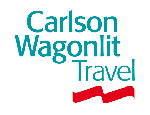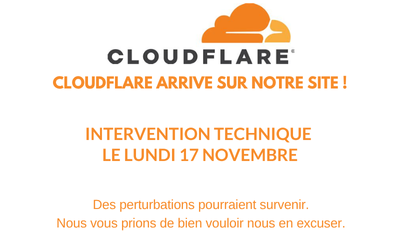 |
CWT Research Shows How Companies Can Reduce Hotel Spend by 21%
|
Catégorie : Monde - Économie du secteur
- Chiffres et études
Ceci est un communiqué de presse sélectionné par notre comité éditorial et publié gratuitement le jeudi 25 juin 2009
Seven steps help to optimize savings
Hotel spend represents on average nearly 40 percent of a total corporate travel budget, but is often underestimated and undermanaged according to a new study conducted by the CWT Travel Management Institute, the research arm of Carlson Wagonlit Travel (CWT), a global leader specializing in business travel management. Room for Savings: Optimizing Hotel Spend debunks some long-held myths and identifies seven steps that enable companies to reduce hotel spend by as much as 21 percent. The full report is available on www.carlsonwagonlit.com.
According to Christophe Renard, CWT vice president, Business Intelligence, the complexity of the hotel market makes it particularly difficult to optimize related spend without a methodical approach: “There are more than 250,000 chain hotels and independent properties that service corporate travelers worldwide. Pricing is complex and rates may vary depending on the day of the week, the season, and/or the economic conditions in a particular market. In addition, there are several distribution channels and a variety of standards for rating hotel quality that differ from one country to the next. Nonetheless, companies can work around this complexity and effectively manage their hotel spend by designing and enforcing a program that responds to travelers’ needs, negotiating skillfully with preferred hotels, and continuously tracking performance.”
Seven steps spell savings
The seven steps that help companies drive hotel savings are interdependent:
1. Consolidate data. Accurate, comprehensive data that provides a breakdown of room rates as well as additional expenses is needed to assess the total cost of stay. Companies can get the most complete data from their travel management company and corporate credit card provider. E-folios (electronic itemized invoices from the hotel), when available, also facilitate accurate consolidation of total spend.
2. Understand traveler needs and behavior. Contrary to popular belief, travelers rate a hotel’s proximity to their place of business higher than hotel category, which is not necessarily a driver of satisfaction. Nonetheless, the research shows travelers prefer higher-category hotels for longer stays. Four types of corporate hotel guests were identified based on their varying needs for practicality (i.e., Internet access, on-site restaurant, leisure/sport facilities) and comfort (hotel category, quality of service, security, atmosphere, environmental friendliness): “Demanding customers” (32 percent) rank all features high in importance; “Comfort seekers” (25 percent) rate comfort higher than practicality; “Pragmatic travelers” (9 percent) consider practical features more important than comfort; and “Easygoing guests” (34 percent) score all features relatively low in importance. By identifying the predominant segments in their companies, travel managers can design or adapt their hotel programs accordingly.
The research also shows travelers prefer a “no-frills,” functional approach to online hotel booking over photos and feedback from their peers.
3. Design an effective hotel policy. A clear, comprehensive hotel policy drives compliance. To that end, the use of preferred hotels and preferred booking channels (i.e., the travel management company and corporate online booking tool) must be mandated. To support this, the research shows that booking through the travel management company results in the use of more preferred hotels, as well as rates that are 18-21 percent lower compared to other booking channels such as hotel call centers and Websites, a call to the hotel directly, online travel agencies and specialized hotel booking sites.
When preferred properties are unavailable, travelers need precise instructions on what to do. This might mean booking a preferred chain, when available, over a non-preferred property or respecting a city cap (i.e., spend limit) in places not covered by the preferred hotel program. Furthermore, the policy should authorize bookings at non-preferred hotels only when the rate is at least 20 percent lower than that of a preferred property. Travelers must also have clear guidelines on which amenity charges will be reimbursed, as these can add up to 33 percent to the total cost of stay. Finally, mandating the use of the preferred corporate credit card leads to better tracking of hotel spend.
4. Optimize the preferred hotel program. Companies should negotiate a preferred hotel agreement whenever spend reaches US$10,000 at a particular property. Savings may also result from introducing lower-category hotels that meet travelers’ needs into the program, since the average price difference from one category to the next is 21-25 percent. In order to limit rate increases and drive compliance through consistency, companies should retain at least 80 percent of their preferred hotels from one year to the next.
5. Negotiate effectively. Individual, property-level agreements tend to generate greater savings than chain-wide deals, which offer a uniform percentage discount off the best available rate at all hotels within the chain. Therefore, when a company’s volume is particularly high, it can be more advantageous to negotiate a property-level agreement even with a chain hotel. Conversely, chain-wide deals enable companies with highly dispersed travel patterns to extend the benefits of a preferred hotel program to markets where their volume is insufficient for property-level negotiations.
Negotiating last-room availability clauses (i.e., hotels must offer the negotiated rate even when only one room of the negotiated type is available) ensures that companies pay a lower average room rate over the entire year. Although most companies prefer the predictability of negotiated fixed rates, dynamic pricing agreements, whereby companies receive a negotiated fixed discount on fluctuating hotel rates, can outperform negotiated flat rates.
6. Improve traveler compliance. In addition to policy mandates that are widely communicated, travelers and travel arrangers must have easy access to the list of preferred hotels, as well as a user-friendly corporate online booking tool. In addition, travel counselors at the point of sale should be authorized to enforce compliance, as well as request that travelers make air and hotel bookings at the same time. Companies must follow-up with non-compliant travelers.
7. Track performance. Several performance indicators must be tracked in terms of program design, sourcing, traveler compliance, and hotelier performance. It is particularly important that GDS (global distribution system) rate-loading audits be conducted several times, particularly at the beginning of the hotel program, since errors are more widespread than commonly thought. An initial CWT audit of five companies’ hotel programs revealed that only 50 percent of negotiated rates were loaded correctly by hoteliers. Furthermore, conducting rate-loading audits can reduce the proportion of rates that are not loaded in the first place from 40 percent to 16 percent on average. Regular rate audits of hoteliers are also important, as they help to ensure they are respecting their commitments. They also identify travelers who are staying in higher-category rooms than authorized.
Commenting on the findings, Mr. Renard said, “The global economic downturn has forced many companies to reduce their costs and manage their business travel more effectively. This study offers concrete, measurable ways to optimize hotel spend while satisfying the needs of travelers and the C-level suite.”
Research methodology
The CWT Travel Management Institute combined several research techniques for an in-depth understanding of key issues in hotel program management. Online surveys with 101 travel managers from companies of all sizes around the world and in a variety of industries, as well as 5,016 corporate travelers and travel arrangers, were received. In-depth interviews with travel industry executives and travel management professionals were also conducted. Quantitative analyses of CWT clients’ hotel spend and transactions were made, as were in-depth reviews of booking and corporate credit card data. A study of preferred hotel programs examined coverage and pricing, and an audit of hotel rates in global distribution systems took place. Case studies analyzing spend data, as well as interviews with travel managers covering issues such as hotel policy, compliance, dynamic pricing, chain deals and sustainable travel were also included. The research was carried out between May 2008 and January 2009.
|
|







